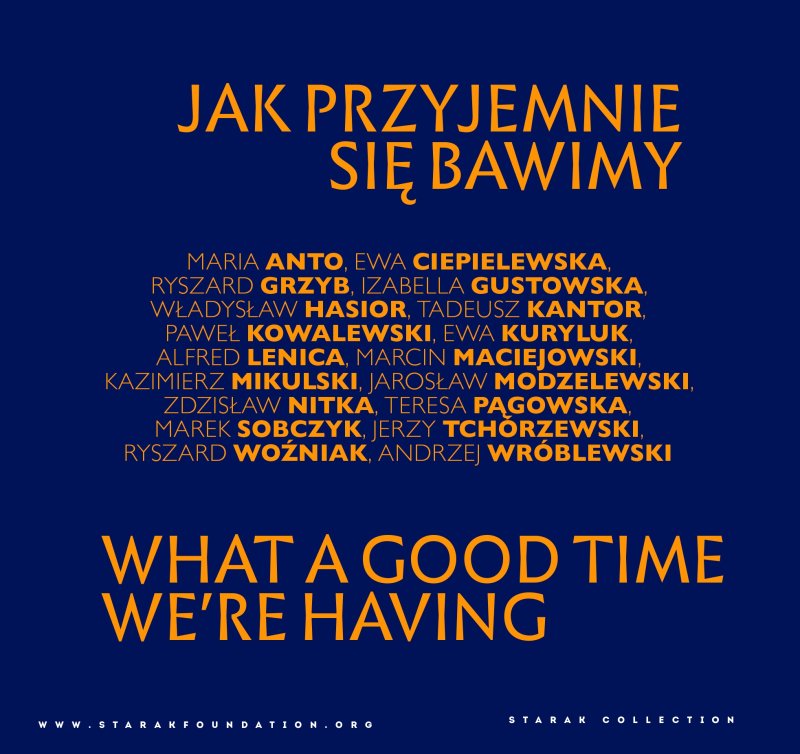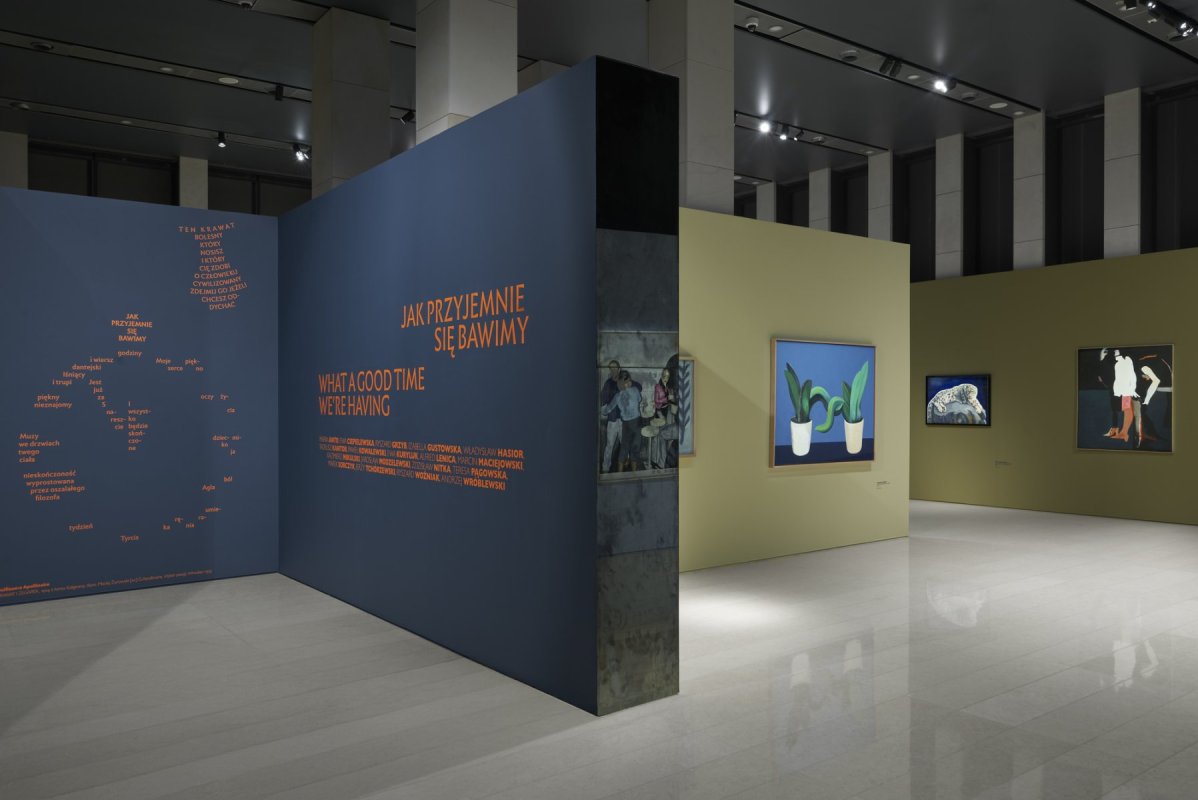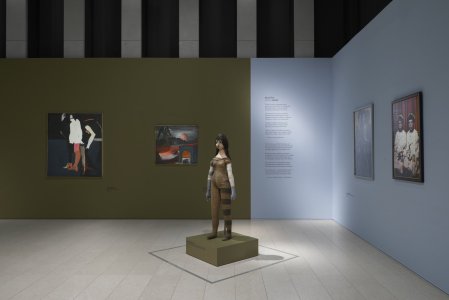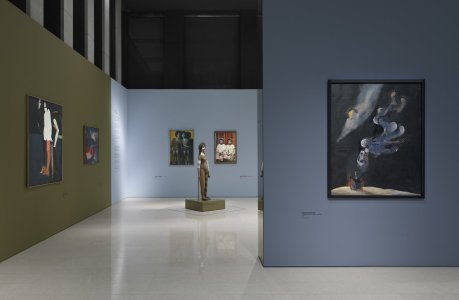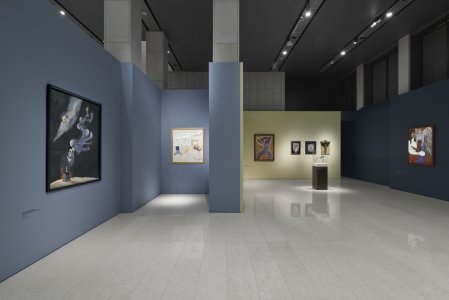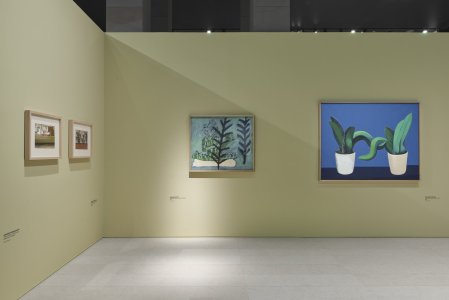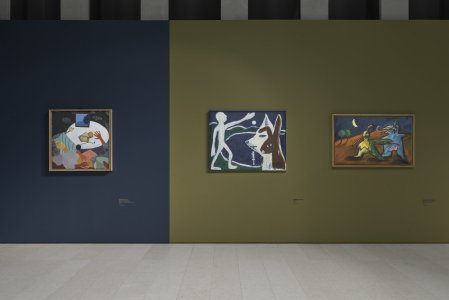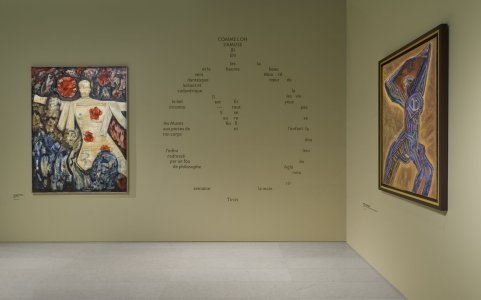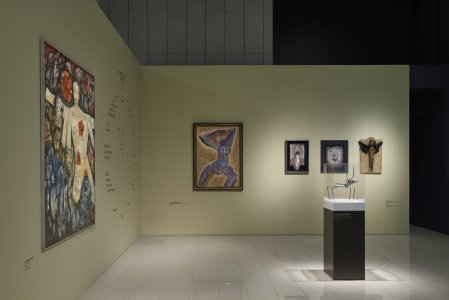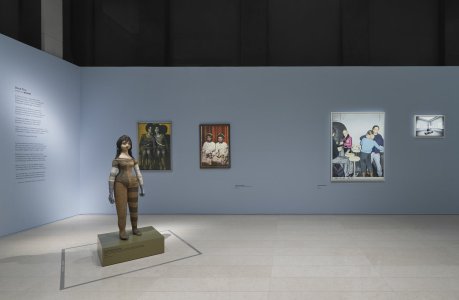Artists: Maria Anto, Ewa Ciepielewska, Ryszard Grzyb, Izabella Gustowska, Władysław Hasior, Tadeusz Kantor, Paweł Kowalewski, Ewa Kuryluk, Alfred Lenica, Marcin Maciejowski, Kazimierz Mikulski, Jarosław Modzelewski, Zdzisław Nitka, Teresa Pągowska, Marek Sobczyk, Jerzy Tchórzewski, Ryszard Woźniak, Andrzej Wróblewski
curator: Ania Muszyńska
Unrealistic, full of unrestrained visions painting. References to subconscious fears, dreams, hallucinations, fairy tales, and myths, as well as inspiration from children's art and reconstructions of ambiguous and unclear mental states of the human psyche. This is the classic definition of surrealism we all know, a fundamental movement that emerged in Europe at the beginning of the last century, changing the perception of art. Today, it continues to fascinate both artists and audiences alike. Our imagination is stirred by Salvador Dalí's imaginarium, Max Ernst's darkness and mystery, and René Magritte's austerity and mysticism. In Polish art, the most famous surrealist was Erna Rosenstein, a painter and poet, creator of sophisticated and allusive small paintings - jewels.
Exhibition at Spectra Art Space "What a good we're having" was created in the context of the 100th anniversary of André Breton's proclamation of the "Surrealist Manifesto" and the establishment of the Bureau of Surrealist Research in 1924. However, it focuses on another leading figure of the movement. We return to the work of poet and art critic Guillaume Apollinaire to take a closer look at the reflections of the creator of the term "surrealism."
The exhibition consists of works that do not qualify directly as surrealist, though they stem from its tradition, energy, and aesthetics. They are characterized by unusual combinations of objects, distortions, and metamorphoses. They combine elements of new figuration and naturalism with the conventionality of the subtexts used. They provoke and surprise. They suspend mystery, liberated from the necessity of imitating nature. However, they do not result from the subconscious decisions of their creators; on the contrary, they are the result of intentional choices. The artists draw with determination from the unparalleled richness of surrealism’s motifs and techniques, its ambiguity, all with one goal - to create an unsettling atmosphere of "the calm before the storm." Similar to Apollinaire’s famous calligram "The Tie and the Watch" from 1914, presented at the exhibition, created on the brink of upcoming global changes, not all of his contemporaries were aware of. When reality becomes unpredictable and the future unclear, sometimes we wish to escape into illusion. To stop time for a moment and succumb to the fleeting impressions of unreal worlds, stimulating imagination and testing the boundaries of our own perception. However, is it not worth, following Apollinaire, remaining persistently aware? After all, it is always "It's finally five minutes to ..."
WHAT A GOOD TIME WE'RE HAVING | Starak Collection
February 10 - July 14, 2024
Exhibition open daily | 10:00 AM - 6:00 PM
Free admission.
Starak Family Foundation | Spectra Art Space
Bobrowiecka 6 | Warsaw
